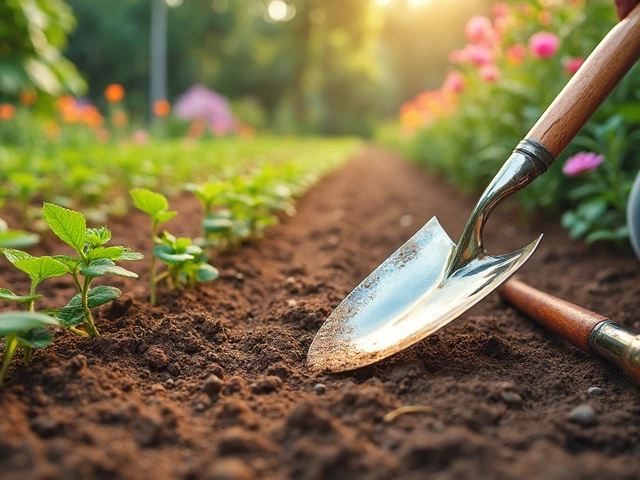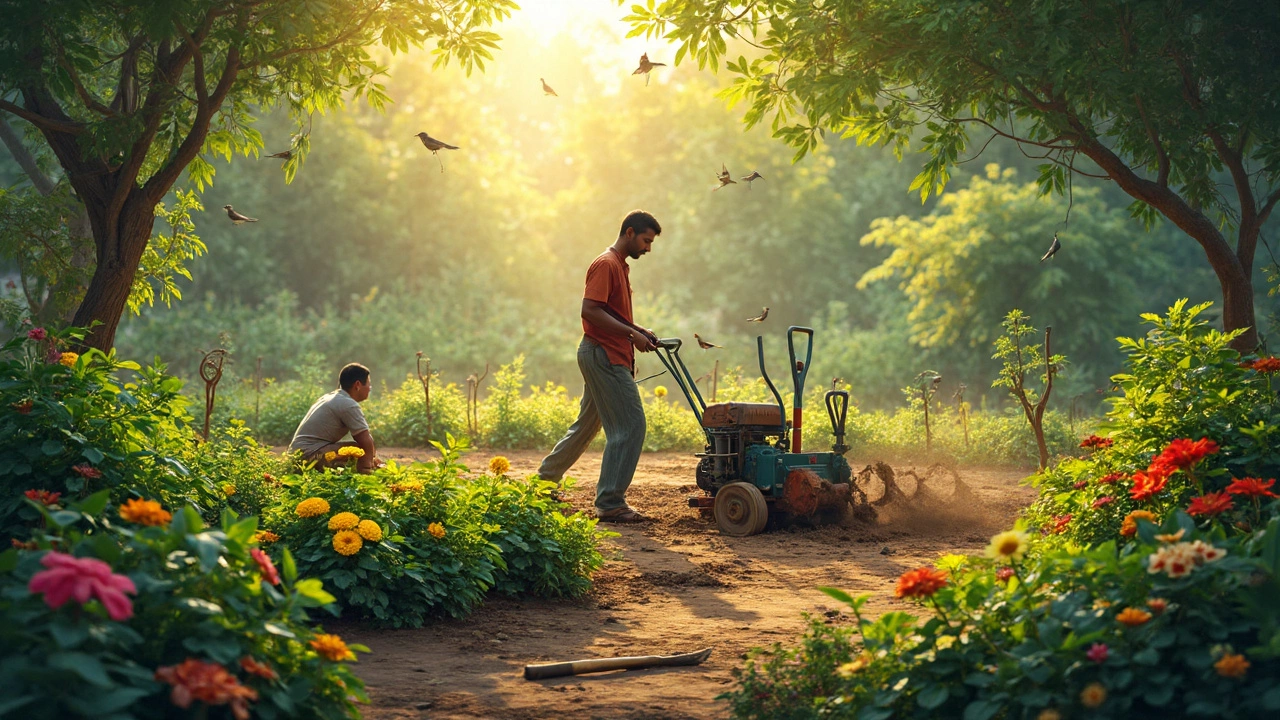Break Up Soil: Simple Ways to Loosen and Refresh Your Garden Ground
Hard, compacted soil can choke roots, block water, and stall growth. If your garden feels like a brick wall when you push a fork in, it’s time to break it up. Below you’ll find practical, low‑cost ways to turn dense earth into a fluffy, plant‑friendly medium.
When and Why to Break Up Soil
Break up soil before you plant anything. Freshly turned soil lets roots spread easily, improves drainage, and lets nutrients reach plants faster. Spring is ideal because the soil is still cool and moisture from winter or early rains makes it easier to work. If you wait until midsummer, the ground gets dry and you’ll end up with dust instead of a workable mix.
Another good moment is after a heavy rain that leaves your garden soggy. The water softens the clods, and a quick pass with a garden fork can prevent a permanent hardpan from forming. Even in winter, a gentle loosening with a spade can keep the soil from freezing into a solid block.
Easy Ways to Loosen Compact Soil
1. Manual tools: A sturdy garden fork or a broad spade does the trick for small beds. Push the fork into the soil, rock it back and forth, and pull it out. Do this in rows, spacing the cuts about 12 inches apart. For larger areas, a rototiller can speed things up, but avoid over‑tilling, which can break soil structure.
2. Add organic matter: Mix in compost, well‑rotted manure, or leaf mold. About 1‑2 inches of compost spread over the surface and worked in will improve texture, increase microbial activity, and keep the soil from re‑compacting.
3. Sand and gypsum: If your soil is heavy clay, a 1‑part sand to 3‑part soil blend works well. Gypsum (calcium sulfate) loosens clay particles without changing pH. Sprinkle 1‑2 cups per square meter and work it in with your fork.
4. Mulch and cover crops: After you break up the soil, lay a thin layer of straw or shredded leaves. This protects the ground from rain impact and keeps it airy. Planting a quick‑growing cover crop like mustard or radish adds natural soil‑biomass that breaks down and further loosens the earth.
5. Water wisely: Lightly water the soil after you’ve worked it. Moisture helps the organic amendments settle and makes the soil easier for roots to penetrate. Avoid waterlogging – a damp, not soggy, feel is best.
Remember, the goal isn’t to turn the garden into a sandpit. You want a balanced mix that feels crumbly yet holds enough water for plants. Test the texture by squeezing a handful; it should hold together when pressed but crumble easily when you let go.
By following these steps, you’ll turn stubborn ground into a thriving bed ready for veggies, flowers, or herbs. Break up the soil once a year, add organic matter, and keep an eye on moisture, and your garden will thank you with healthy growth and abundant crops.
How to Break Up a Large Garden: Best Tools for the Job
Breaking up a large garden can feel like a daunting task, but with the right tools, it can be more manageable and even enjoyable. This article delves into practical tips and tools needed for this gardening challenge, ensuring you have a smoother experience. Featuring expert advice on choosing the right equipment, from tillers to forks, every gardener will find something useful. Learn how to tackle garden size, soil types, and ergonomics for maximum efficiency.
About
Garden Tools
Latest Posts


The First Essential Tool Every Gardener Needs
By Alden Thorne Apr 16, 2025

Compost vs Organic Compost: What Really Sets Them Apart?
By Alden Thorne Jun 4, 2025

Will Rabbits Eat Zinnias in Your Garden?
By Alden Thorne Feb 25, 2025

